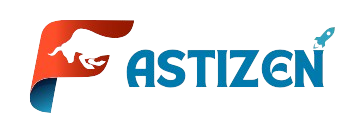Top collaboration tools for teams include Slack, Microsoft Teams, and Asana. These platforms enhance communication and streamline project management.
Effective collaboration is crucial for team success in today’s fast-paced work environment. With remote work becoming the norm, choosing the right tools can significantly boost productivity and engagement. Various platforms offer features like real-time messaging, video conferencing, and task management, allowing teams to communicate seamlessly.
Selecting the best collaboration tools not only improves workflow but also fosters a positive team culture. By leveraging these tools, teams can stay organized and connected, no matter where they are located. This guide will explore the top collaboration tools available, helping you find the perfect fit for your team’s needs.
Introduction To Team Collaboration Tools
Collaboration software helps teams work better together. Effective communication is key for success. With these tools, everyone stays updated on tasks. Sharing files becomes easy and quick. Team members can chat in real-time, reducing misunderstandings.
Benefits include saving time and boosting productivity. Projects move faster with clear goals. Team members feel more connected, even from afar. Using collaboration tools can also improve project management. These tools provide clear timelines and responsibilities.
| Benefit | Description |
|---|---|
| Increased Productivity | Teams accomplish tasks more efficiently. |
| Improved Communication | Real-time chat helps avoid confusion. |
| Easy File Sharing | Documents can be shared quickly. |
Real-time Communication Platforms
Chat apps are essential for instant messaging among team members. They allow quick communication and file sharing. Popular options include Slack, Microsoft Teams, and Discord. These apps help keep everyone connected and informed.
Video conferencing solutions make remote meetings easy. Tools like Zoom, Google Meet, and Microsoft Teams support face-to-face interactions. They offer features like screen sharing and recording. This helps teams collaborate better, no matter where they are.
Project Management Software
Project Management Software helps teams work together better. Task Assignment features let team members know who does what. This keeps everyone on the same page. Tracking tasks shows progress easily. It helps to see what is done and what is left.
Integrating Timelines and Deadlines is very important. It helps teams meet their goals on time. Setting clear deadlines keeps tasks on track. Timelines show how long tasks will take. This way, teams can plan their work effectively.
Document Sharing And Editing
Cloud storage services allow teams to store files online. This makes sharing easy and quick. Popular options include Google Drive, Dropbox, and OneDrive. These platforms keep documents safe and accessible from anywhere.
Simultaneous document editing is a key feature of many cloud services. Multiple users can work on a document at the same time. Changes are saved automatically, which reduces confusion. This feature enhances teamwork and speeds up projects.
| Tool | Key Feature |
|---|---|
| Google Drive | Real-time collaboration |
| Dropbox | File recovery options |
| OneDrive | Integration with Microsoft Office |
Collaborative Writing Tools
Version control is essential in shared writing. It helps track changes easily. Team members can revert to earlier versions. This prevents losing important content. Clear and organized version histories boost productivity.
Commenting and reviewing features enhance collaboration. Team members can leave feedback directly on the document. This makes it easy to discuss ideas. Everyone stays on the same page. Quick revisions can lead to better results.
Using tools that combine both features is beneficial. This ensures a smooth writing process. Teams can produce high-quality work efficiently.
Workflow Automation Tools
Workflow automation tools help teams work better together. They make repetitive tasks easier and faster. This saves time and energy for important work.
Streamlining tasks can reduce mistakes. Many tools allow for custom workflow creation. Teams can design workflows that fit their unique needs.
Some popular tools include:
- Zapier: Connects apps to automate tasks.
- Asana: Manages projects and automates updates.
- Trello: Uses boards for tracking tasks.
File Sharing And Management
Secure File Transfer Protocols ensure safe sharing of files. They protect sensitive data during transfers. Popular options include SFTP and FTPS. These tools encrypt files, making them difficult to access by unauthorized users.
Organizing files for team access is crucial for efficiency. Use clear folder structures to help everyone find what they need. Label files with descriptive names. This makes searching for files easier. Regularly review and update files to keep everything current and relevant.
Version Control Systems
Version Control Systems help teams manage code effectively. They allow multiple developers to work on a project at the same time. With these tools, tracking changes becomes easy. Team members can collaborate without overwriting each other’s work.
Popular version control systems include Git, Subversion, and Mercurial. These tools keep a history of all changes. This way, teams can revert to earlier versions if needed.
Collaboration in Creative Projects also benefits from version control. Designers and writers can share their work easily. Changes can be tracked and discussed among team members. Feedback becomes straightforward, making the creative process smoother.
Calendar And Scheduling Apps
Coordinating team meetings is easier with the right tools. Calendar apps help everyone know when to meet. Shared calendars keep all team members informed. This transparency builds trust among team members.
Using a shared calendar allows for better scheduling. Team members can see each other’s availability. This reduces the back-and-forth messages about meeting times. Everyone stays on the same page.
Some popular calendar apps include Google Calendar, Microsoft Outlook, and Calendly. These tools offer features like reminders and event notifications. They also allow users to color-code events for better organization.
Feedback And Survey Tools
Gathering team input is essential for success. Use tools like Google Forms or SurveyMonkey to collect opinions. These platforms make it easy to create surveys.
Feedback helps identify strengths and weaknesses within a team. Regularly asking for input can lead to better collaboration. Anonymous surveys encourage honest responses.
Encouraging team members to share their thoughts fosters a positive environment. Use feedback to make informed decisions for continuous improvement.
Consider including questions about team dynamics, project progress, and individual roles. This information can guide future projects and enhance teamwork.
Intranet And Social Collaboration
Building a company culture online is essential for team success. Use tools that promote communication and engagement. Platforms like Slack and Microsoft Teams help connect team members. They allow for easy sharing of ideas and feedback.
Encouraging participation boosts morale. Virtual events and online forums can enhance teamwork. Create spaces for casual chats to build friendships.
Internal knowledge sharing is vital for growth. Use shared drives or platforms like Confluence for resources. These tools help keep everyone informed and up to date.
Regular updates and newsletters keep the team aligned. Encourage team members to share their expertise. This practice fosters a sense of community and collaboration.
Choosing The Right Tools For Your Team
Understanding your team’s needs is key to choosing the right tools. First, identify what tasks require collaboration. Consider communication, project management, and file sharing as essential features. Evaluate the size of your team. A small team may need fewer tools.
Balancing cost and features is crucial. Look for tools that offer great value without sacrificing quality. Free tools may work for some teams, but paid options often provide better support. Make sure the tools you choose fit within your budget while meeting your team’s requirements.
Conclusion: Enhancing Team Productivity
Team productivity increases with the right collaboration tools. Key takeaways include choosing tools that fit your team’s needs. Look for features like real-time communication, file sharing, and task management.
After implementing a new tool, ensure everyone receives proper training. Encourage team members to ask questions and share feedback. Monitoring usage can help identify any issues early. Regular check-ins can boost team engagement and productivity.
Celebrate small wins to keep morale high. Recognize individuals who excel in using the tool. This promotes a culture of collaboration and encourages others to participate fully.
Frequently Asked Questions
What Are The Best Collaboration Tools For Teams?
Popular collaboration tools include Slack, Microsoft Teams, and Trello, each offering unique features for team communication and project management.
How Do Collaboration Tools Improve Teamwork?
Collaboration tools streamline communication, enhance project tracking, and foster a more connected team environment, boosting overall productivity.
Can Collaboration Tools Be Integrated With Other Software?
Many collaboration tools support integrations with popular software like Google Drive, Zoom, and Asana, enhancing workflow efficiency.
Conclusion
Effective collaboration tools are essential for any team aiming for success. They enhance communication, streamline workflows, and boost productivity. By choosing the right tools, teams can foster innovation and achieve their goals more efficiently. Embrace these tools to unlock your team’s full potential and drive collaborative success.




